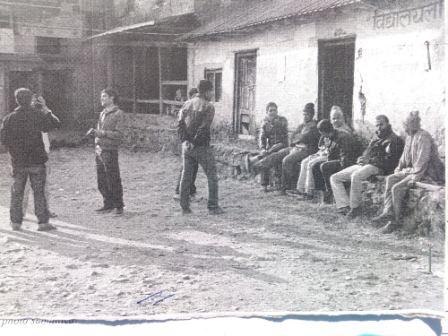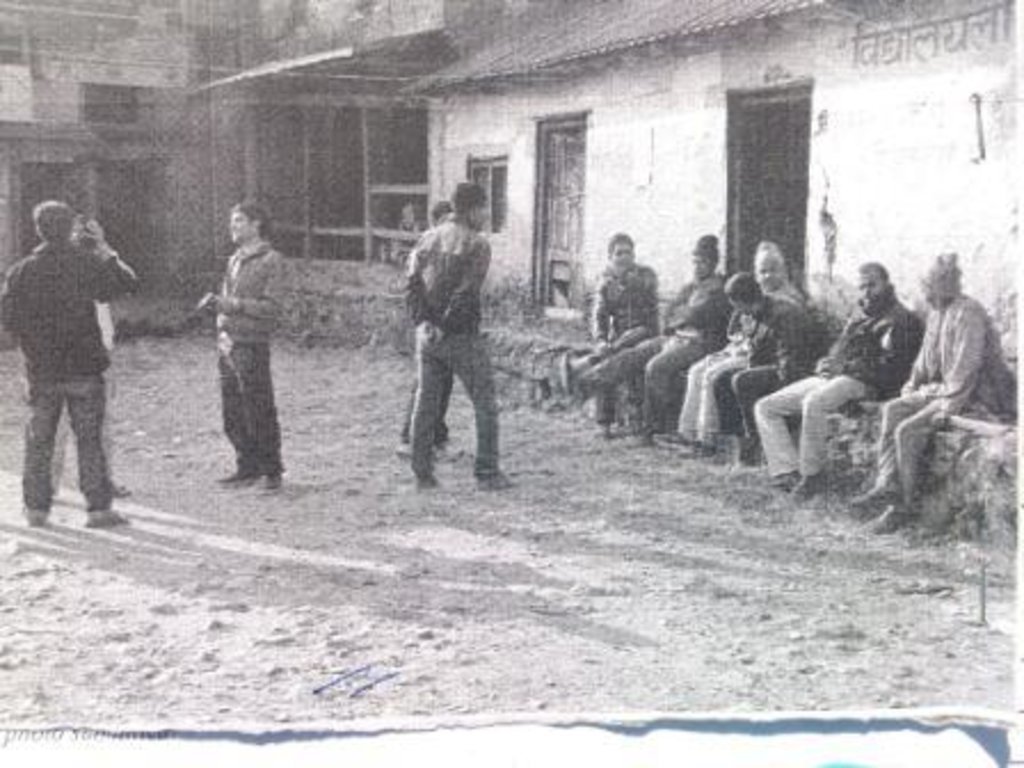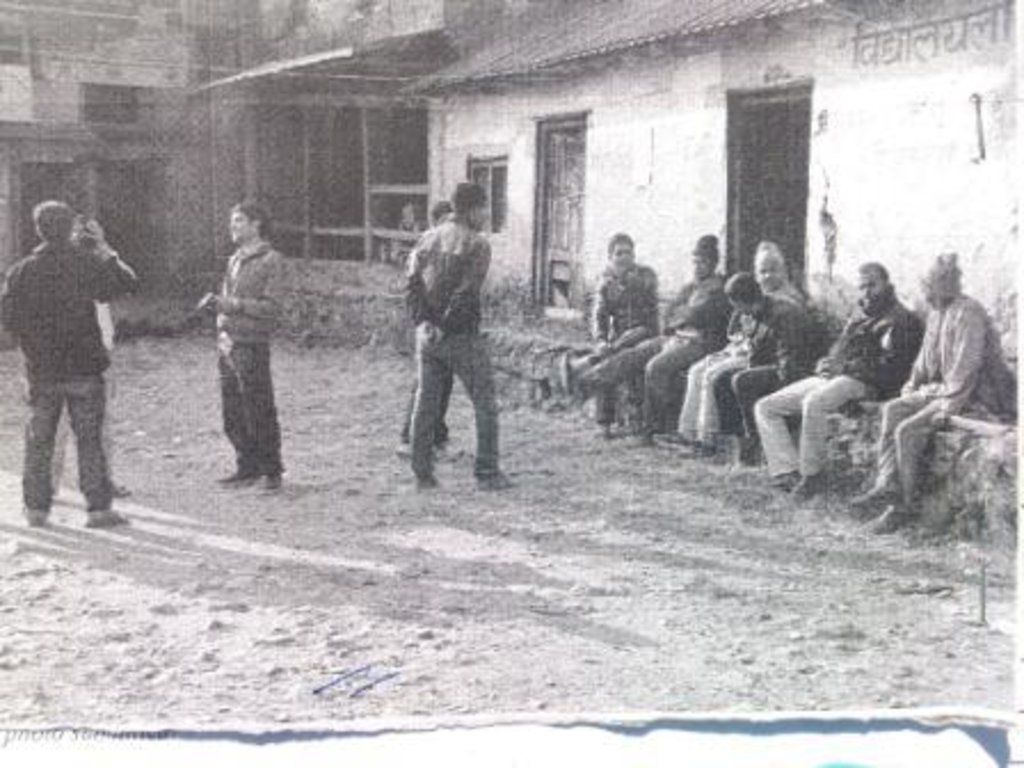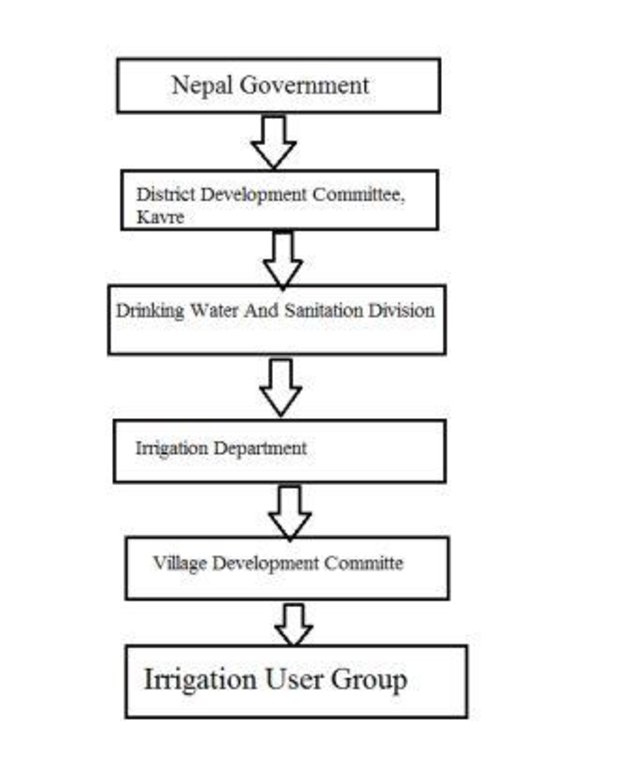Pipeline Irrigation [Nepal]
- Creation:
- Update:
- Compiler: Sabita Aryal
- Editor: –
- Reviewer: Fabian Ottiger
Pipe Sinchai
approaches_2636 - Nepal
View sections
Expand all Collapse all1. General information
1.2 Contact details of resource persons and institutions involved in the assessment and documentation of the Approach
SLM specialist:
Singtan Gangaraj
Chyamrangbesi-2 kavrepalanchowk
Nepal
SLM specialist:
Bajracharya Bisweta
bisarm73@gmail.com
Kathmandu University
Dhulikhel
Nepal
Name of the institution(s) which facilitated the documentation/ evaluation of the Approach (if relevant)
Kathmandu University (KU) - Nepal1.3 Conditions regarding the use of data documented through WOCAT
When were the data compiled (in the field)?
02/01/2013
The compiler and key resource person(s) accept the conditions regarding the use of data documented through WOCAT:
Ja
1.4 Reference(s) to Questionnaire(s) on SLM Technologies
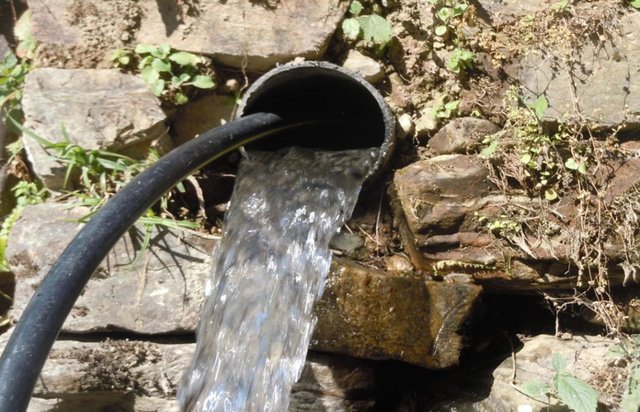
Pipe Irrigation [Nepal]
Waterways and pipelines to draw water from closeby rivers for irrigation and household purposes.
- Compiler: Sabita Aryal
2. Description of the SLM Approach
2.1 Short description of the Approach
The process and measures taken to draw water from nearby rivers for irrigation and household purposes.
2.2 Detailed description of the Approach
Detailed description of the Approach:
Aims / objectives: This approach was carried out to overcome the problem of less agricultural yield due to dry land.
Methods: This approach was first proposed by Mr. Gangaraj Singtan and later on a committee was formed. This committee further carried on the work through interactions.
Stages of implementation: To implement this approach,they had to face financial problems.This was solved by the contribution provided by the District Development Committee.And another was collected from villagers and the work could be carried out further.
Role of stakeholders: Everyone from every ethnic group was involved in the work.However to carry on the major discussions,the committe was formed.The following people were involved on the central committee: Mr. Gangaraj Singtan, Mr. Dand Prasad Dahal, Mr. Khemraj Dahal, Mr. Suman Dahal and mr Kiran Dahal.
2.3 Photos of the Approach
2.5 Country/ region/ locations where the Approach has been applied
Country:
Nepal
Region/ State/ Province:
Chyamrangbesi-2
Further specification of location:
kavrepalanchowk
Map
×2.6 Dates of initiation and termination of the Approach
Indicate year of initiation:
2004
2.7 Type of Approach
- recent local initiative/ innovative
2.8 Main aims/ objectives of the Approach
The Approach focused mainly on other activities than SLM (agriculture)
Mainly the approach was carried out to reduce the problem of dry soil that had led to low agricultural production in the village.
The SLM Approach addressed the following problems: The main problem to be addressed were the low agricultural production due to soil and the lack of cash to invest for the soil management to overcome the problem.
2.9 Conditions enabling or hindering implementation of the Technology/ Technologies applied under the Approach
availability/ access to financial resources and services
- hindering
The villagers could not do the full investment for the adoption of the technology.
Treatment through the SLM Approach: District office provided with 50% investment to carry on the technology.
institutional setting
- hindering
The villagers did not have any idea of this kind of irrigation.
Treatment through the SLM Approach: The trainers and advisor helped them to know about this approach.
legal framework (land tenure, land and water use rights)
- enabling
The existing land ownership, land use rights / water rights greatly helped the approach implementation: The only hindrance was finance.
workload, availability of manpower
- hindering
Due to financial aid problem it was not possible to appoint labours.
Treatment through the SLM Approach: The villagers themselves worked inorder to make this possible.
3. Participation and roles of stakeholders involved
3.1 Stakeholders involved in the Approach and their roles
- local land users/ local communities
Every group of people be it brahmin, tamang , chhetri, etc were involved including women.
Formed a committee for the approach and implemented together. Formed a committee to work on the technology.
- local government
DDC provided finance for the implementation.
- Engineer, MrPadam Bahadur Singtan helped with the model
If several stakeholders were involved, indicate lead agency:
Mainly, Mr. Gangaraj Singtan proposed the idea of the technology followed by discussion and interaction in the whole community.
3.2 Involvement of local land users/ local communities in the different phases of the Approach
| Involvement of local land users/ local communities | Specify who was involved and describe activities | |
|---|---|---|
| initiation/ motivation | self-mobilization | Mr.Gangaraj Singtan initiated the project by forming a committee and further worked in implementing it. |
| planning | interactive | Planning for the project was done by interaction in the committee |
| implementation | interactive | Interaction was done in the committee to implement it. |
| monitoring/ evaluation | interactive | land uses do it themselves in their own house and further interact in the meetings. |
| Research | interactive | land users with their involvement in the meetings. |
3.3 Flow chart (if available)
3.4 Decision-making on the selection of SLM Technology/ Technologies
Specify who decided on the selection of the Technology/ Technologies to be implemented:
- land users alone (self-initiative)
Explain:
Since, the villagers depend on agriculture for there livelihood, to overcome their problem the land users themselves took initiative followed by different procedures upto the district level.
Decisions on the method of implementing the SLM Technology were made by by land users* alone (self-initiative / bottom-up). To implement the technology,District Development Committee helped with financewhich helped the land users to carry out further process.
4. Technical support, capacity building, and knowledge management
4.1 Capacity building/ training
Was training provided to land users/ other stakeholders?
Nee
4.2 Advisory service
Do land users have access to an advisory service?
Ja
- By Mr.Padam Bahadur Singtan
Describe/ comments:
Name of method used for advisory service: Technical advice by Mr.Padam Bahadur Singtan; Key elements: regarding the size of the pipe, Route of the irrigation pipe; The advice was effective as no problem has been accounted so far.
Advisory service is quite adequate to ensure the continuation of land conservation activities; The villagers seem to have idea of the process to be followed further.
4.3 Institution strengthening (organizational development)
Have institutions been established or strengthened through the Approach?
- no
4.4 Monitoring and evaluation
Is monitoring and evaluation part of the Approach?
Ja
Comments:
no. of land users involved aspects were regular monitored by land users through observations; indicators: allocation of project activities
management of Approach aspects were ad hoc monitored by land users through observations
There were no changes in the Approach as a result of monitoring and evaluation
There were no changes in the Technology as a result of monitoring and evaluation
4.5 Research
Was research part of the Approach?
Ja
Specify topics:
- economics / marketing
Give further details and indicate who did the research:
The research was entirely villagers work.
Research was carried out on-farm
5. Financing and external material support
5.1 Annual budget for the SLM component of the Approach
If precise annual budget is not known, indicate range:
- 2,000-10,000
Comments (e.g. main sources of funding/ major donors):
Approach costs were met by the following donors: local government (district, county, municipality, village etc) (District Development Committtee , Village Development Committee): 50.0%; local community / land user(s) (A committee formed for the project): 50.0%
5.2 Financial/ material support provided to land users
Did land users receive financial/ material support for implementing the Technology/ Technologies?
Ja
5.3 Subsidies for specific inputs (including labour)
- equipment
| Specify which inputs were subsidised | To which extent | Specify subsidies |
|---|---|---|
| Cement and pipe | partly financed | |
If labour by land users was a substantial input, was it:
- voluntary
Comments:
For the benefit of their land, land users were involved.
The equipment was owned by the land users themselves and for cement and pipes, partly contribution was made by DDC.
5.4 Credit
Was credit provided under the Approach for SLM activities?
Nee
6. Impact analysis and concluding statements
6.1 Impacts of the Approach
Did the Approach help land users to implement and maintain SLM Technologies?
- No
- Yes, little
- Yes, moderately
- Yes, greatly
The runoff of upper soil due to erosion was prevented because of the flow of water through pipe and in fields, more yeild has been noticed.
Did the Approach empower socially and economically disadvantaged groups?
- No
- Yes, little
- Yes, moderately
- Yes, greatly
All the ethnic group were benefitted as their livelihood improved in different ways.
Did other land users / projects adopt the Approach?
- No
- Yes, little
- Yes, moderately
- Yes, greatly
ward no.9 of the same VDC
Did the Approach lead to improved livelihoods / human well-being?
- No
- Yes, little
- Yes, moderately
- Yes, greatly
Increased yield led to increased incomne so the land users were able to improve their settlement, build good homes, got school fees for their children.
Did the Approach help to alleviate poverty?
- No
- Yes, little
- Yes, moderately
- Yes, greatly
The income from the yeild helped greatly to improve their way of living, education and better health.
6.2 Main motivation of land users to implement SLM
- increased production
for better cultivation.
- increased profit(ability), improved cost-benefit-ratio
better yield leads to better economic condition
- reduced workload
no load to carry water from distance
- affiliation to movement/ project/ group/ networks
to prevent dry soil and upper soil loss.
6.3 Sustainability of Approach activities
Can the land users sustain what has been implemented through the Approach (without external support)?
- yes
If yes, describe how:
They have the idea of the procedures to carry out. Regarding finance also they have been collecting Rs.30 from each month and so far have collected 13000. So, they may not have problem in finance as well.
6.4 Strengths/ advantages of the Approach
| Strengths/ advantages/ opportunities in the land user’s view |
|---|
| Greenery (How to sustain/ enhance this strength: This can be sustained by awareness to the people about consequences of dry soil and poor use of water.) |
| Better livelihood. |
| Strengths/ advantages/ opportunities in the compiler’s or other key resource person’s view |
|---|
|
Increased yeild led to increased income and hence better economic condition. (How to sustain/ enhance this strength: Proper use of water.) |
| The committee formed led to united work. (How to sustain/ enhance this strength: Participation of all people without discrimination.) |
6.5 Weaknesses/ disadvantages of the Approach and ways of overcoming them
| Weaknesses/ disadvantages/ risks in the land user’s view | How can they be overcome? |
|---|---|
| Large amout may lead to water wastage. | People must be encouraged to make proper use or go for alternative use. |
| Weaknesses/ disadvantages/ risks in the compiler’s or other key resource person’s view | How can they be overcome? |
|---|---|
| Sometimes the water may get wasted if it is not required in the field. | The water when not required may be used for other purposes or may just simply drain in other route where it is required. |
| Sometimes the amount of water required by the crops may exceed due o which the crops may die. |
7. References and links
7.1 Methods/ sources of information
- field visits, field surveys
- interviews with land users
Links and modules
Expand all Collapse allLinks

Pipe Irrigation [Nepal]
Waterways and pipelines to draw water from closeby rivers for irrigation and household purposes.
- Compiler: Sabita Aryal
Modules
No modules


